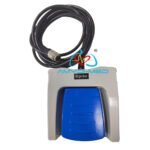May. 29 , 2019
The operation process is as follows:
1 occluding the Nonin SpO2 Sensor on the thumb of the patient’s palm to be tested;
2. Record the basic blood oxygen saturation waveform, focusing on the waveform size;
3. Compression of the ipsilateral radial artery to block the brachial artery blood flow and observe the oxygen saturation value and fluctuation curve at this time;
4. After releasing the ulnar artery, observe the recovery of blood oxygen saturation to help determine the compensation of the sacral and ulnar branches.
GE-Marquette SpO2 Sensor advantages are:
1. Greatly reduced the time of operation. A skilled medical staff can complete the examination and only need a few seconds to determine whether the blood vessel is in good condition;
2. The test can be completed without the patient’s cooperation, even in the state of general anesthesia;
3. Easy to learn. When the operator presses one artery, the blood oxygen saturation waveform on the monitor should have no obvious change or only the waveform is slightly reduced; when the other artery is pressed, the result should be the same as above; when the bilateral blood vessels are pressed, the blood oxygen saturation The waveform should disappear; however, if the blood oxygen saturation has disappeared when only one artery is pressed, the detection result can be directly judged as “positive”, and the diagnosis that the unpressed side blood vessel is not smooth can be determined.



